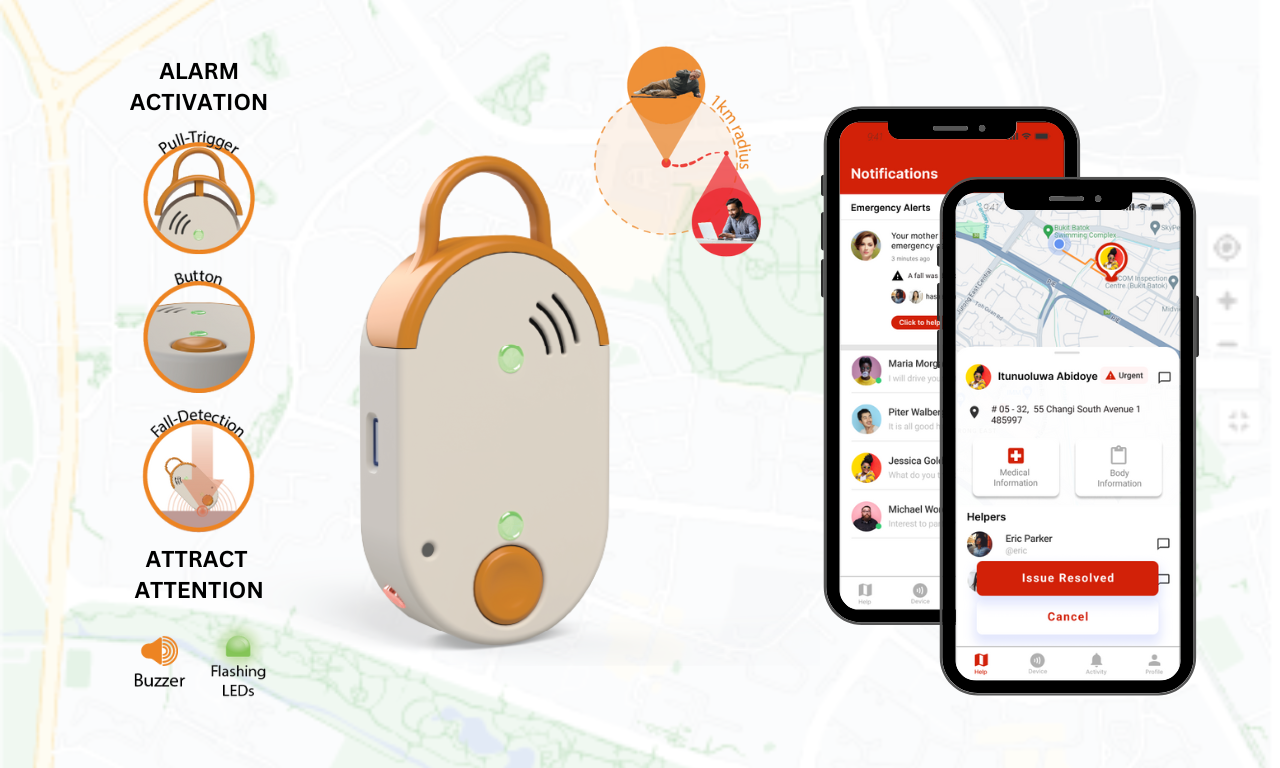Project Roadmap
To understand the market, we conducted two surveys that focus on the:
- Challenges of seniors and their caregivers during emergencies
- Understanding of potential responders’ stand in helping seniors in distress.
01: Seniors and Caregivers
Our survey with 16 seniors and 7 caregivers highlighted their concerns during emergencies:
- The majority of seniors lack a designed emergency contact plan.
- Prevalent concerns about personal safety, with falling topping the list.
- Key features for an ideal personal alarm device are emergency contact alerts, GPS tracking, and a user-friendly button.
- Most seniors are willing to share personal and situational information for emergency assistance.
02: Responders
In this survey, we sought to understand the motivations of potential responders for using a mobile app to assist seniors in distress and 32 responses were collected:
- High willingness to assist nearby individuals facing emergencies, even more so when unoccupied.
- Most responders had never used emergency contact apps before.
- Essential features for an emergency app include location sharing, user information, and details about nearby responders.
- A preference for aiding within a 1 kilometer radius.
Market Research
- Limited portable hardware integration with mobile application for emergencies.
- No personal safety mobile applications catered for seniors.
- Limited solutions to alert nearby strangers a few minutes away.
Our project aims to bridge these gaps by:
- Integrating a wearable device with a user-friendly app.
- Combining LED lights, buzzers, and cellular networks forms a robust alert system, swiftly notifying both nearby individuals and loved ones in emergencies.
- Facilitating real-time communication between helpers and emergency contacts to ensure efficient coordination.
Target Group
With Singapore’s elderly population expected to reach 900,000 by 2030, enhancing their safety becomes increasingly vital. Our solution prioritises SENIORS because they often face unforeseen accidents and are an integral part of Singaporean society.
Problem Statement
How might we design a device that empowers elderly individuals in Singapore to swiftly request assistance from nearby individuals and emergency contacts via a mobile application during emergency situations?
Hardware Device:
Our design prioritises compactness and multi-functionality, incorporating a microcontroller for Bluetooth connectivity for alerts and location tracking.
Additionally, user experience is key in our device’s design. We explore ring, wristband and pendant types, aiming for a compact yet aesthetically pleasing design.



Software Application:
Our mobile application complements the functionality of our personal alarm device, offering:
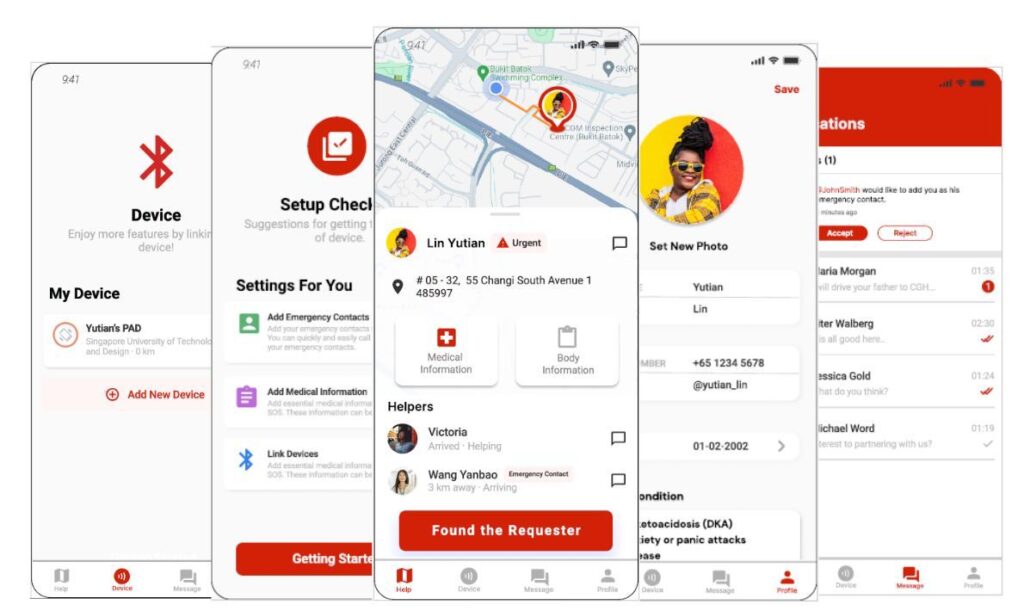
Project Details - Hardware Device
Product Overview

Our hardware is designed with a user-friendly triggering system, including
- 01: A press-in button for manual activation.
- 02: A pull-out trigger for manual activation.
- 03: An internal buzzer to audibly alert the immediate surroundings.
- 04: Two main LED lights to indicate the activation of the device.
- 05: An IMU sensor for fall detection.
- 06: A reset button.
- 07: A side LED indicating the charging progress.
- 08: A USB-C charging port.
Features
At just 92mm long, 45.6mm wide, 19mm thick, and weighing 47g, this device is the epitome of portability.


The device offers dual alert options: pull the microswitch to notify app users and family, or press the button to alert family only. Upon activation, LED 1 blinks for the primary and LED 2 for the secondary trigger, providing clear visual feedback with green lights.
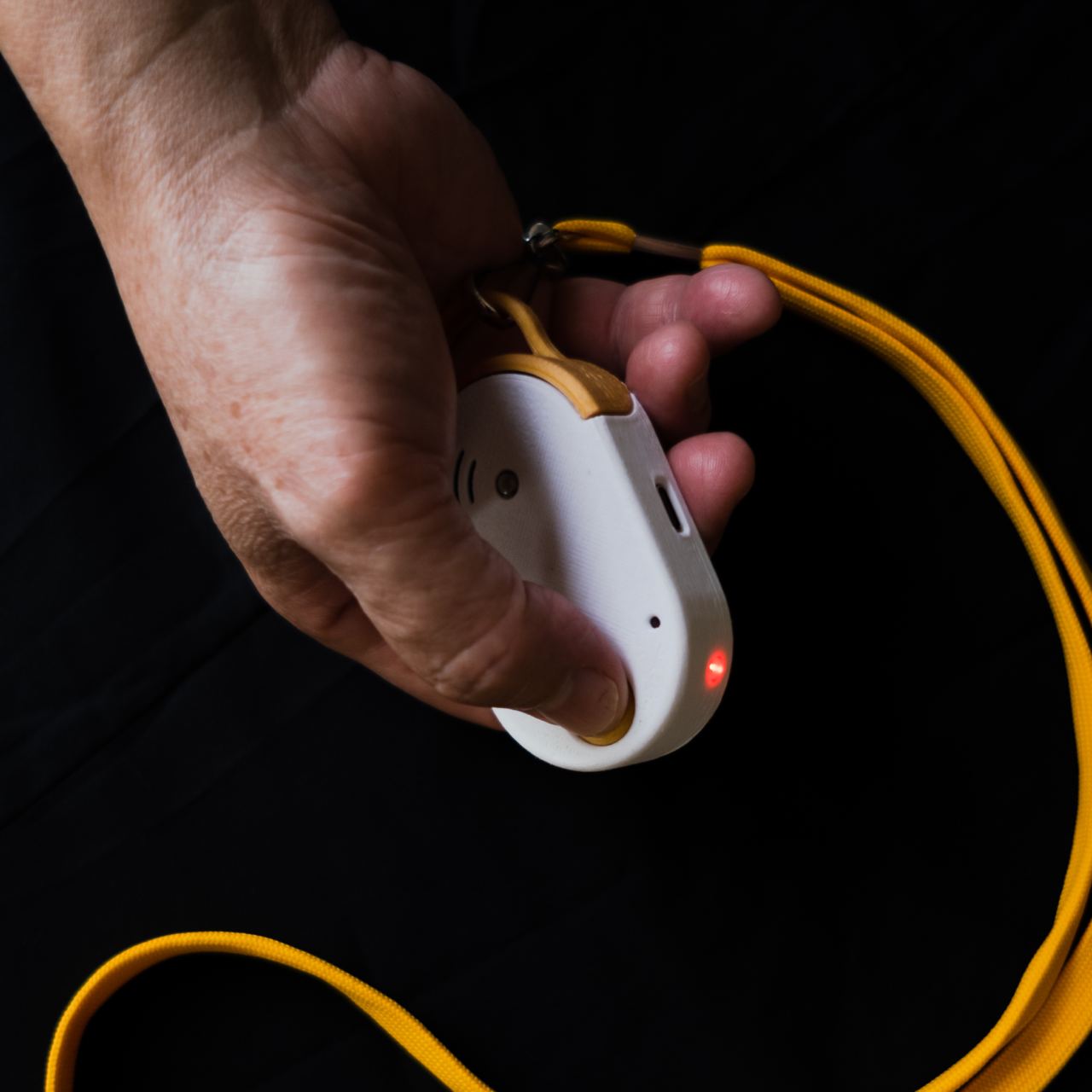
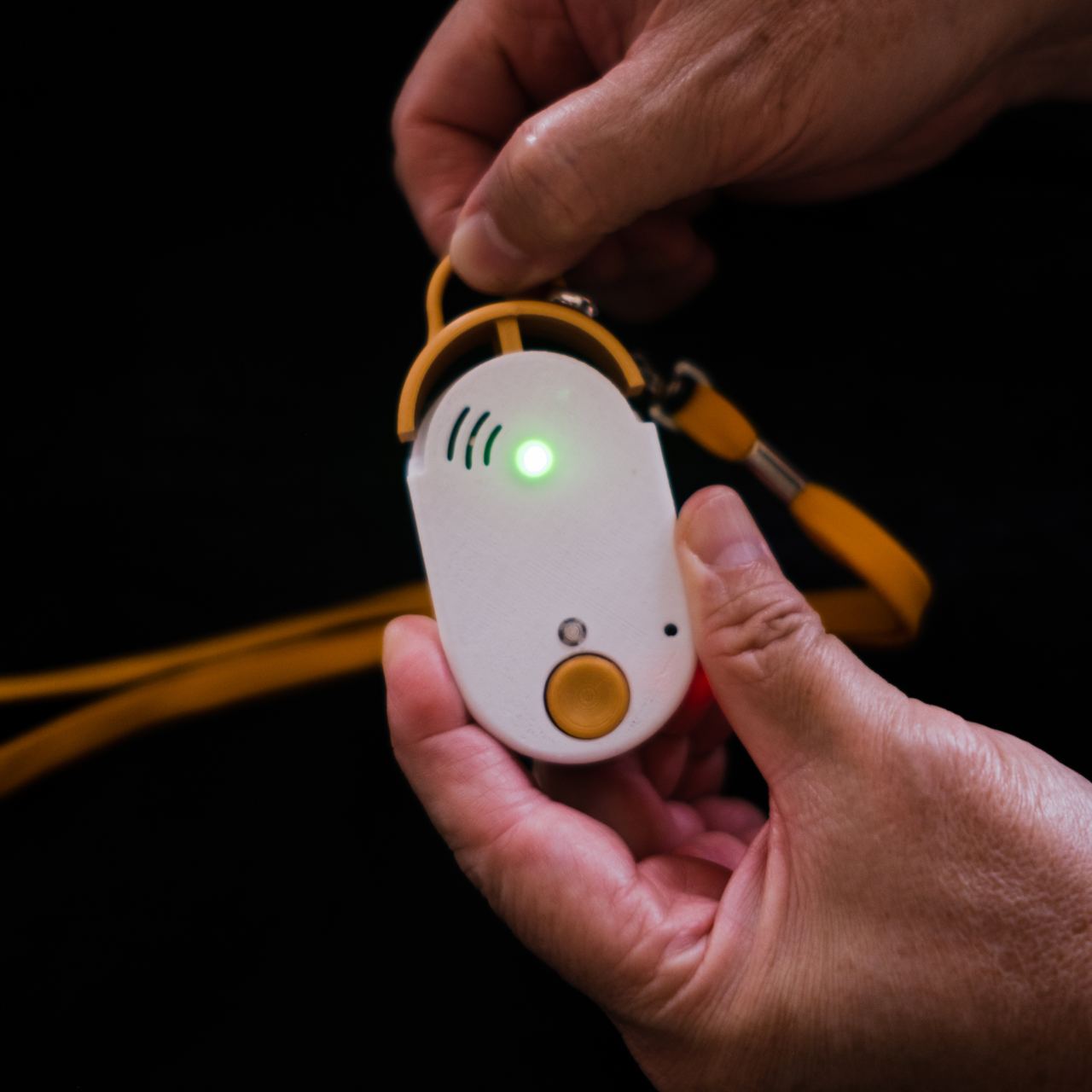
Whether you prefer it as a pendant, attach to your keychain, tuck safely in your pocket, or hang it freely, our device adapts to your lifestyle.
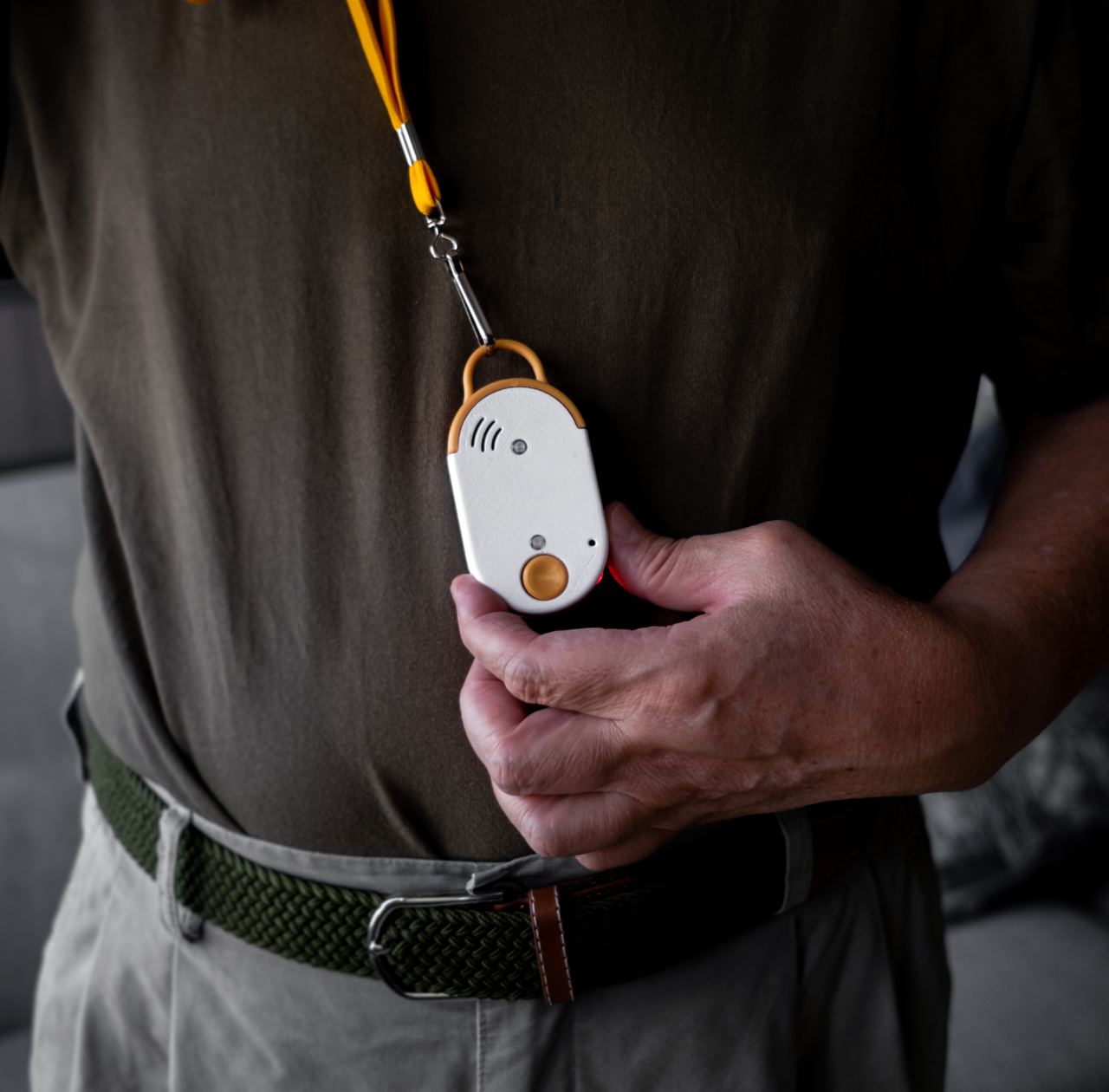
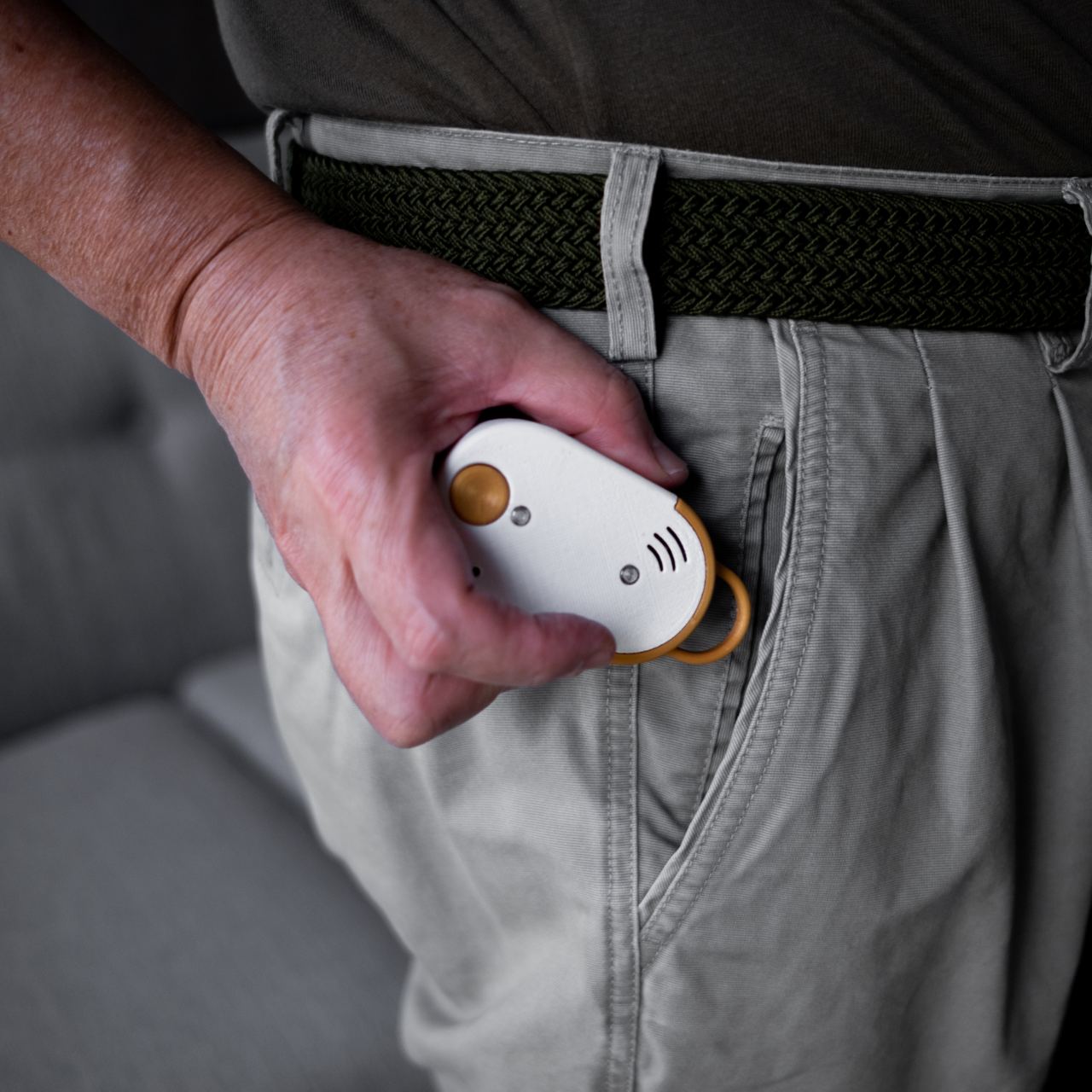
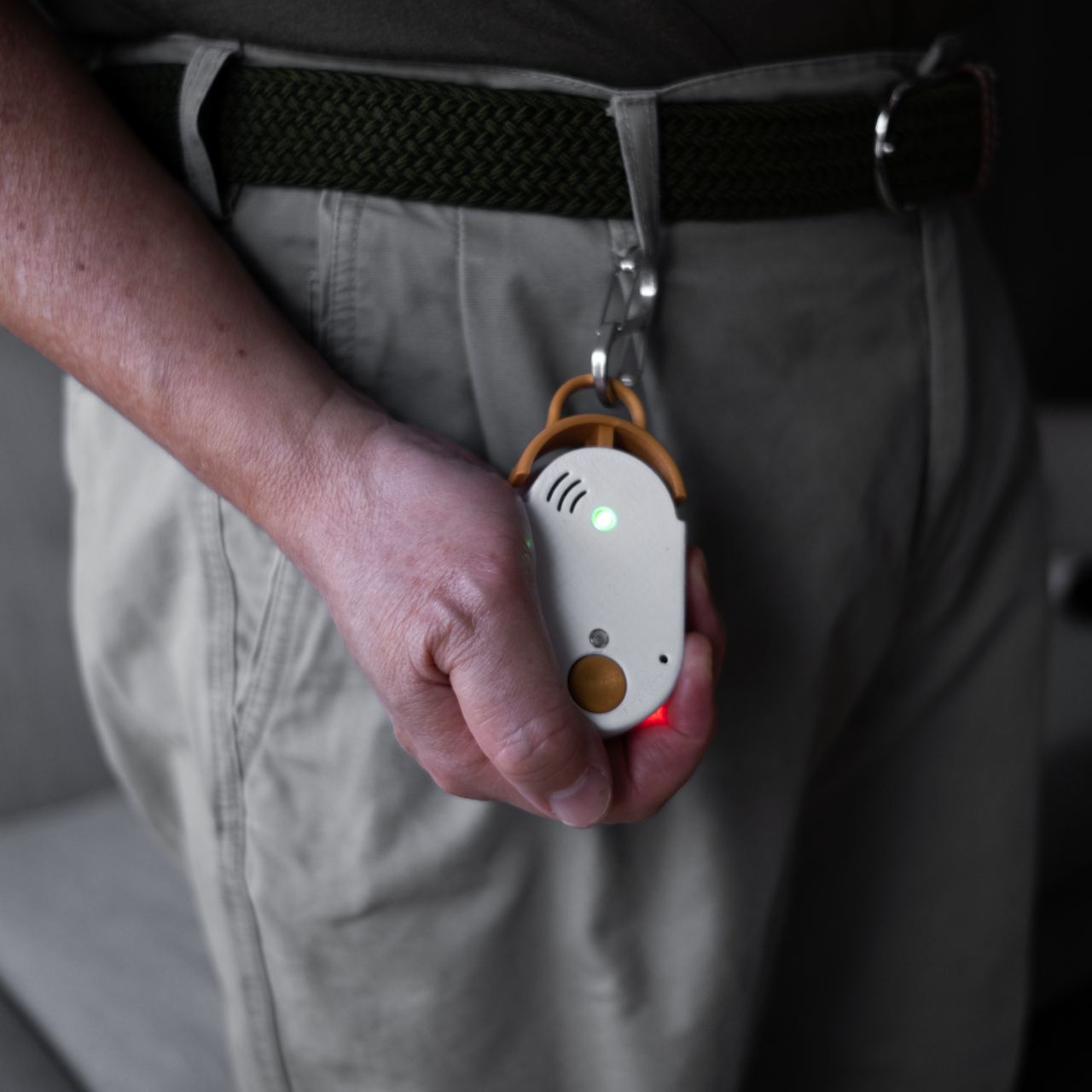
Whether it's through manual triggers or fall detection, the buzzer emits a 2kHz continuous beep tone - loud enough at 95dB to draw attention up to 100 meters away in quiet environments and 5 meters in noisy ones.
With a rechargeable 3.7V LiPo battery, our device boasts a swift 3-hour full charge via USB-C. It also features built-in protection against overcharging and undercharging, ensuring safety and efficiency.
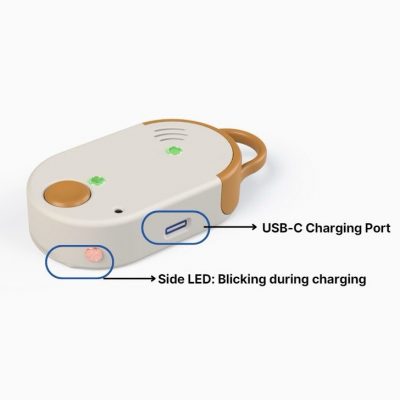
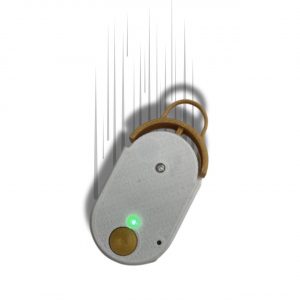
Our device features an IMU sensor and an inbuilt machine learning model for precise fall detection. Upon detecting a fall, it automatically triggers an alert to the mobile app, swiftly requesting assistance.
Project Details - Software Application
Application Overview
Our app is designed to work seamlessly with our wearable alarm device, enhancing personal safety by linking users with nearby individuals and emergency contacts. From easy device pairing to live messaging in critical moments, our app ensures that users have the tools they need to stay safe and informed.

Features
Completing this setup ensures that upon alert activation, the emergency signals are broadcast immediately, and that responders are informed of location details and equipped with the essential medical supplies to render swift and informed assistance.
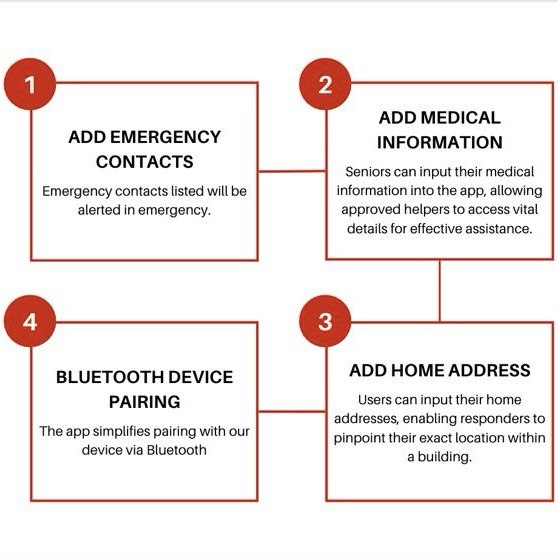
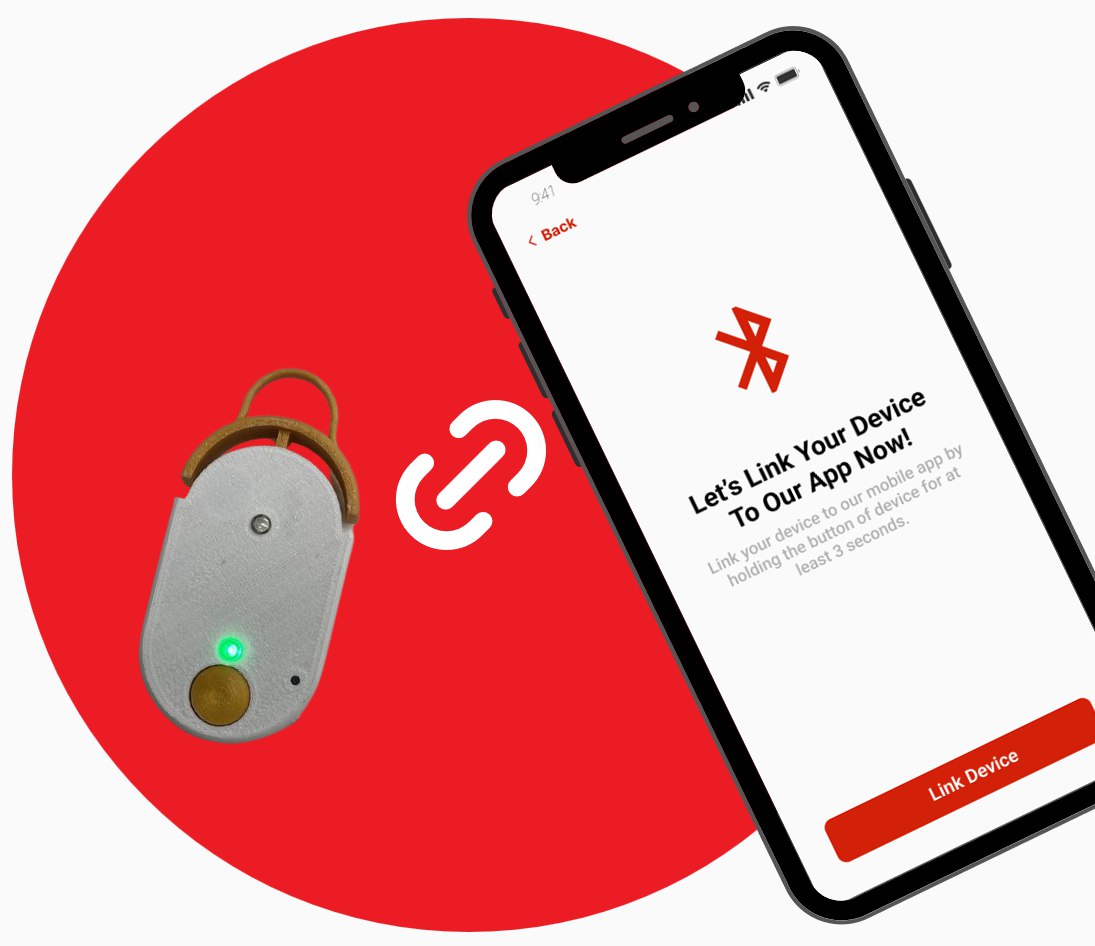

Our application's live map, powered by Google Maps API, displays active emergencies in real-time. This feature provides GPS tracking capabilities, offering users a comprehensive view of emergency locations and nearby resources.
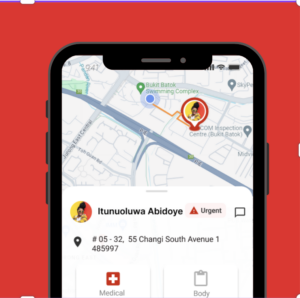
Leveraging geolocation and push notification services, our app instantly notifies all emergency contacts and nearby users within a 1 kilometer radius.
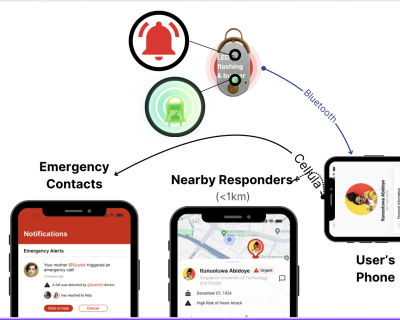
The application continuously updates users on the emergency status, including responder arrivals and situation resolutions. It ensures that all concerned parties are informed of the latest developments and can track the progress in real-time.



The feature facilitates direct communication between responders and the emergency contacts of the senior in need, allowing for the exchange of on-the-ground information and details necessary for coordinating assistance.

Seniors can initiate an emergency alert via both the physical device and a virtual button in the app, ensuring convenience and accessibility in urgent situations - even for users without a physical device.

Our app features a confirmation system for emergency alerts, retracting notifications upon user confirmation of accidental activation. This reduces false alerts, while ensuring responders promptly address genuine emergencies.
